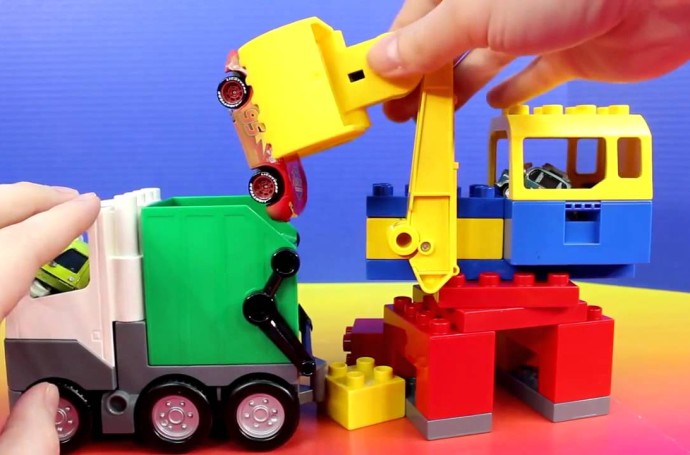At first glance it might be hard to see how that colored lump of plastic can be good for your baby, let alone aiding their development; with its flashing lights, jangling tunes and chunky features, does it serve any purpose at all? One thing that you’ll quickly come to realize, though, is that the toy’s lights, sounds and shapes are what make it special, serving as your child’s primary means of learning long before reading, writing and arithmetic are introduced. You see, regardless of appearance, almost any toy can be an educational tool during those formative years – you just need to know what to look out for.

Why are toys important for learning?
Are toys not just a distraction technique used by parents in need of a five-minute break, or given by well-meaning relatives to buy affection? Actually, no: toys are so much more than that. Toys, while primarily bought for entertainment purposes, will serve as your child’s primary means of learning, and are going to prove vital throughout their development. Indeed, various studies agree that play is integral to childhood, helping children to cultivate the skills they need to become older children and, eventually, adults. Toys enrich experiences, stimulate the senses, improve coordination and cognitive function, and allow children to interact with the world; via play your child will gain confidence, learn to use his or her imagination and get to grips with emotion. More than all of that, though, toys give children a sense of fun and enable them to enjoy their formative years. Creativity, resourcefulness, problem solving and social interactions are all part of growing up and can be aided by toys.
Essential baby toys for your child’s development
When purchasing toys for your baby, it’s important to recognize the function they hold; is the toy designed to stimulate senses, encourage cognitive behavior, or to guide your child as he or she takes those first steps? Each stage of a child’s life is part of their developmental journey, and toys can be used to enhance the adventure, and aid their progression. So, what toys are best for each developmental stage, and how do you know what to choose?
Sensory development
Sensory development is the very first stage that your baby will encounter – long before ABCs and 123s come into play. While their sight is limited at first, babies need visual stimulation and to experience textures and sounds. For these reasons, brightly colored toys, those with a variety of materials, and musical objects are perfect; think of a baby play gym, cot mobile, rattle, teether and play mat. These kinds of toys will keep little one occupied, and play a vital role in their earliest days of development.
Motor development
As your baby develops, so too will his or her ability to move and recognize his or her body; you will no doubt discover endless enjoyment as your child learns to interact with toys, plays patty cake and grasps at items just out of reach. Again, rattles are excellent for teaching babies cause and effect as well as movement, while building blocks, activity cubes, bead frames and baby jigsaws will be adored. Art supplies, patterned items and books will be vital for fine motor skills and language development, so don’t forget these.
Cognitive development
Research has shown that children develop 50 percent of their adult intelligence by the time they are four-years-old: astounding, when you think about it. In order to aid your child’s cognitive development, provide toys that will encourage a new way of thinking; shape sorters, jigsaw puzzles, threading activities, building bricks, play dough and stackers are all fantastic cognitive aids.
Physical development
While all toys can be used to encourage movement, particularly if they’re placed far enough away, there are plenty of aids designed to develop physical skills. Toys that can be pushed and pulled, such as shopping carts, pushchairs, and animals on string, as well as walkers, will ensure your little one is moving around as much as possible, while ride-on toys, which require balance and foot power, and rockers, improve a baby’s capability to stand firm. Balls will encourage your child’s hand-eye coordination skills, while play tunnels and climbing frames introduce outdoor play.
Social development
As your baby grows, he or she will soon notice that they’re not the center of the universe; now is the time for sharing, imaginative play and language development. Games that involve multiple players are essential in creating bonds and teaching sharing skills, while books will continue to aid your little one’s ability to understand and form words. Finally, consider role-play games and the toys that inspire creativity; puppets and dolls, dress-up, play food, a home corner and messy activities can all help children to play with others, while helping them to gain confidence and self-awareness, and identify their place in the world.
We’re sure after this blog post that you will regard all toys in a new light. Whether your child is learning to grasp, identifying himself for the first time, developing speech or moving around for the very first time, toys will play an integral part in that journey. Brightly colored, designed to sing the ABC or interesting to touch, toys have always served a far greater purpose, although you’d do well to remember the fun factor when choosing your child’s playthings. Your child’s toybox should be a veritable playground of discovery, enjoyment and education, engaging them from their earliest moments – what will you choose to play with first?
